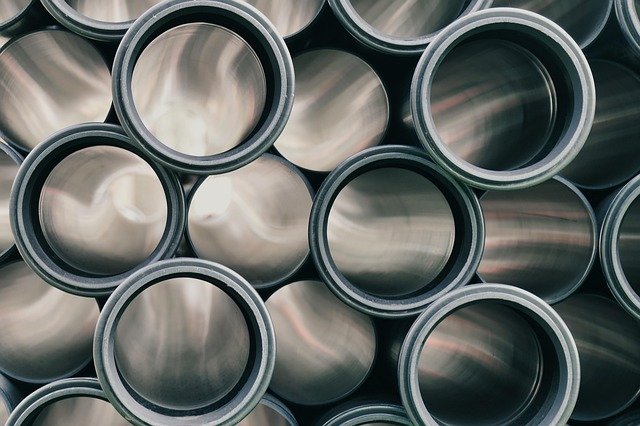Integrating IoT Sensors for Continuous Water Loss Tracking
Continuous monitoring with IoT sensors offers a practical path to reduce water loss across plumbing and municipal pipelines. This article explains how sensor types, telemetry, analytics, and maintenance strategies work together to detect moisture, seepage, and corrosion early, helping preserve infrastructure and guide targeted repairs.

Continuous water loss in plumbing and utility networks erodes infrastructure value and wastes resources. Integrating Internet of Things (IoT) sensors creates a persistent monitoring layer that senses moisture, acoustic signatures, thermal anomalies, and pressure variations. When paired with telemetry and analytics, these inputs enable diagnostics that distinguish background noise from real leaks, prioritize interventions, and feed maintenance schedules for both localized plumbing and larger pipeline systems.
How do IoT sensors measure water and moisture?
IoT sensors detect water presence and moisture through direct and indirect methods. Direct moisture probes measure relative humidity or conductivity in soils, walls, or around fittings; capacitive sensors can detect thin film moisture on surfaces. Indirect approaches include pressure transducers that register drops consistent with leaks, and optical or dielectric sensors that detect saturation. For plumbing systems where hidden leaks occur behind walls or under slabs, a combination of surface moisture sensors and smart flow meters offers corroborating data that reduces false positives and improves diagnostics.
Which sensors suit pipeline monitoring: acoustics or thermal?
Acoustic and thermal sensors provide complementary evidence for pipeline issues. Acoustic sensors pick up turbulence, hissing, or distinct leak signatures along pipelines and can be deployed as inline devices or distributed along buried mains. Thermal sensors detect temperature differences where escaping water cools or warms surrounding material; infrared or contact thermistors can reveal seepage paths. Selecting acoustics versus thermal depends on pipe material, depth, ambient conditions, and the expected leak size—often systems incorporate both to increase detection sensitivity across different scenarios.
How does telemetry and analytics enable diagnostics?
Telemetry transmits sensor readings to central systems where analytics apply trend detection, anomaly scoring, and pattern recognition. Time-series analytics identify gradual flow increases or nightly pressure drops; spectral analysis of acoustic data isolates characteristic leak frequencies; machine learning models can classify events into likely causes such as corrosion-induced seepage versus transient pressure surges. Combining multiple data streams—flow, pressure, moisture, acoustic, thermal—permits diagnostics that assign confidence levels and recommended actions, enabling maintenance teams to focus resources efficiently.
How to integrate sensors into plumbing and infrastructure?
Integration begins with a survey of existing infrastructure and critical risk zones: joints, valves, older materials prone to corrosion, and areas with settlement risk. Wired or wireless sensor networks can be layered: smart meters and pressure sensors at nodes, acoustic or clamp-on devices on mains, and surface moisture sensors in buildings. Power options include mains, batteries, or energy harvesting for remote locations. Standard communication protocols (LoRaWAN, NB-IoT, MQTT) and interoperable data formats simplify telemetry. Effective integration also plans for device management, firmware updates, and physical access for diagnostics and repair.
Detecting corrosion, seepage, and maintenance signals
Corrosion and seepage often produce precursors before visible failure: slow pressure decay, localized moisture, elevated acoustic noise, or sensor drift patterns. Corrosion-related thinning may alter acoustic signatures or change thermal conductance at a joint. Regular analytics baselines help distinguish normal wear from accelerating degradation. Maintenance workflows can use scheduled inspections for components flagged by predictive diagnostics, enabling targeted replacement rather than broad, reactive repairs and reducing downtime and resource use.
Data reliability, telemetry security, and operational use
Reliable detection depends on data quality and secure telemetry. Redundancy—multiple sensors and overlapping modalities—reduces false alarms. Data validation routines filter transient spikes and correlate events across sensors. Telemetry security protects integrity and privacy: authenticated endpoints, encrypted channels, and role-based access to analytics dashboards are standard practices. Operationally, analytics outputs should integrate with maintenance systems so diagnostics produce clear work orders, estimated locations, and confidence metrics to guide on-site technicians.
Conclusion
Integrating IoT sensors for continuous water loss tracking combines sensor selection, telemetry, and analytics to detect leaks, moisture intrusion, corrosion, and seepage earlier than periodic inspections alone. A layered approach—mixing acoustics, thermal, moisture, and flow measurements—improves diagnostic accuracy and supports prioritized maintenance that protects plumbing and pipeline infrastructure while conserving water and reducing long-term repair costs.






